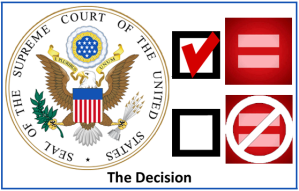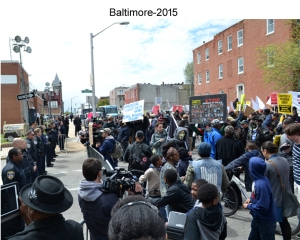With another presidential election cycle picking up steam, we once again hear the bellicose charges of would-be candidates regarding illegal immigration.
Most Americans, including legal Hispanic residents, agree that illegal immigration is a major problem. Most of their ideas for dealing with it are non-starters, however. Though a few candidates tout actions that would supposedly fix the problem, they only mention their ideas at election time, and then pay no further attention until the next election.
Memo to all candidates, of both political parties:
STOP IT! WE’VE HEARD IT ALL BEFORE!
Republicans beat their chests and pledge to “BUILD A WALL!” That’s incredible. The party supposedly concerned about the out-of-control national debt claims that they will spend $500-billion or more on a wall.
Of course Donald Trump says that he’ll get Mexico to pay for the wall. Really, Donald? Really? If the Mexican government could find an extra $500 billion to spend, would they be encouraging their citizens to emigrate?
If the US decided to build such a wall, it would be 2,000 miles long. Noting that constructing 10 miles of Interstate Highway usually takes government-hired contractors at least five years, how long would it take them to construct a 2,000-mile long wall? Would any politician favoring this plan still be alive when the wall was finished sometime in the 23rd century?
Also Republicans, listen up! More than half of the illegal immigrants arrive under visas, and simply “overstay.” Those people couldn’t care less about that wall.
Some candidates appeal to frustrated audiences by promising to “Send ‘em all back where they came from.” Voters need only to do the math. If we loaded 1,000 people on buses every day to return to Mexico, we would send 365,000 people back every year. Since the illegal immigrant population is currently estimated at more than 12-million people, the task would require 33 years. If we factor in an estimated 10 percent annual population growth, the task would require more than 50 years. And if each returnee is entitled to a hearing in front of a judge, the process would require participation of 1,000 new judges, and 2,000 new lawyers. Even at low government salaries, the legal expenses alone would exceed $150-billion a year.
From the Democrat side, we see and hear even more odious rhetoric. The president and his sycophants point to statistics showing an increase in the number of deportations since 2009. However, the number isn’t adjusted to reflect the overwhelming number of deported people who return again and again, with many having been deported five or six times.
Listen-up, Mr. President! Perhaps you can choose the 1,000 worst criminals among the immigrant population and deport each of them 12,000 times every year. Statistically you could solve the entire problem, telling voters that you’ve executed 12-million deportations— the total illegal immigrant population.
The usual Democrat position is, “nothing to see here, walk on by”. In other words, they favor continuing as we are, and continuing to grow the illegal immigrant population. Since Hispanic immigrants—legal or illegal—usually vote overwhelmingly for Democrats, the party is happy to see that population grow.
By fighting to block voter ID laws, Democrats can count on millions of votes from illegal immigrants. Their labor union allies in many states also thrive on union dues paid by immigrants, so they are happy to support get-out-the-vote activities, the so-called “ground game” on election days.
Democrat spokespeople have added talking points, suggesting that illegal immigrants bolster the economy, and do not take jobs away from Americans because “ they do jobs that other people won’t.” Other than seasonal crop-picking jobs, there are few jobs that unemployed Americans won’t fill. Does anyone from a border state who sees their public schools overcrowded by immigrant children, or fights stop-and-go traffic 24 X 7 believe that immigrants are bolstering their economy? Since so many of those states and municipalities are facing bankruptcy, the economy doesn’t appear to be bolstered by the increased population.
The only part of the economy that’s bolstered by the illegal immigrant population is the business community that pays below-market wages to immigrants. Ironically we see an alliance of Democrats with big business, the same companies that Democrats love to castigate in their public statements.
AN HONEST SOLUTION TO THE ILLEGAL IMMIGRATION ISSUE
Despite all of the political misinformation, there is a path to resolving this issue. First, voters must understand that the immigrants are NOT to blame. They have done what their home countries have encouraged them to do. They have sought jobs in the US, understanding that US politicians look the other way as a strategy to win elections.
US jobs are the key to resolution. The US government must take control of hiring of ALL non-citizens. Every employer must file a statement listing all employees who are not citizens. We must pass legislation that declares lack of compliance to be a felony that can be charged personally against any company officer or manager responsible for filing. The IRS should oversee this process and request prosecution of managers and officers that don’t comply.
Companies must be able to request employment slots for non-citizens. However, they should not be permitted to hire any non-citizens without slots.
If the fabled e-Verify system can accommodate these controls, all employers must be required to connect to it. If e-Verify isn’t sufficient, a new system must be designed and implemented ASAP.
When politicians and government bureaucrats adhere to this approach, the population of illegal immigrants will recede to a manageable level. Some immigrants will find that they cannot find legal work in the US and return to their native countries. The US should provide them with transportation back to their home countries and a small cash gift. But if they return to the US and apply for a job, they should be flagged and stand trial for fraud against the US government.
My book “The Victory that Wasn’t” offers a fictional alternate history with a different kind of Military, and better outcomes for all Americans. It’s available on Amazon at http://amzn.to/1GUL8oX











